After a slow start, the art toy scene in South Korea is expanding steadily in scale and scope. Many Korean artists have gained recognition, leading to collaborations with international brands. At the top tier is Hands In Factory, a trio of artists celebrating their 18th anniversary. They create toy figures that are not only attractive but also have a story to tell.
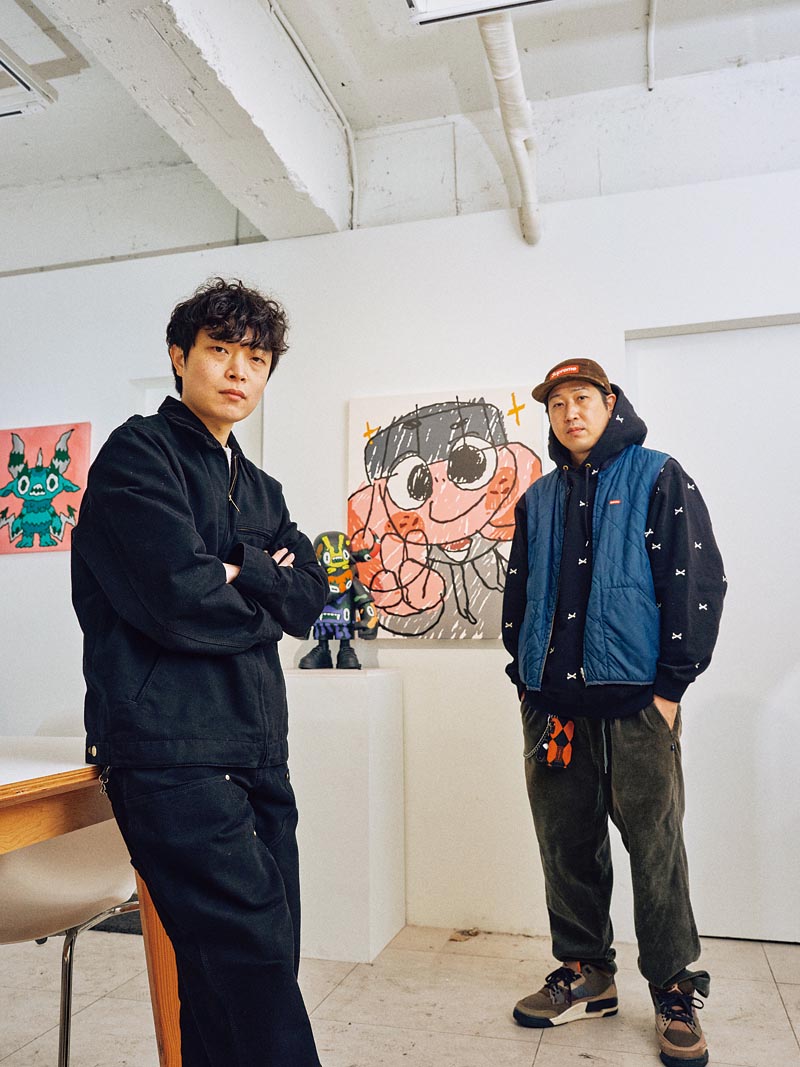
Founded in 2008, Hands In Factory is fueled by the synergy of three artists — Uptempo (right), RocKOON, and Ha Jong-hun (left). The team continues to expand its creative footprint in and outside of Korea through exhibitions and collaborations with global brands.
Art toys reflect their creator’s philosophy. Unlike figures that are just 3D representations of animated characters, art toys are shaped by their creators’ worldview and vision. Initially regarded as a subculture in Korea, art toys began to be recognized for their artistic value in the mid-2000s and gradually established themselves as a form of contemporary art. After COVID-19, a new wave of collectors emerged among young consumers seeking to express new values. The rise of online shopping was central to this shift. It propelled a boom in art toys’ popularity, which spread from a number of devoted collectors to a wider audience.
Drawing inspiration from street culture, the designer trio Hands In Factory offers a window into the current state of the Korean art toy scene. Formed in 2008, each member — Uptempo (Lee Jae-heon), RocKOON (Park Taejun), and Ha Jong-hun — pushes the boundaries, putting his signature style on every character.
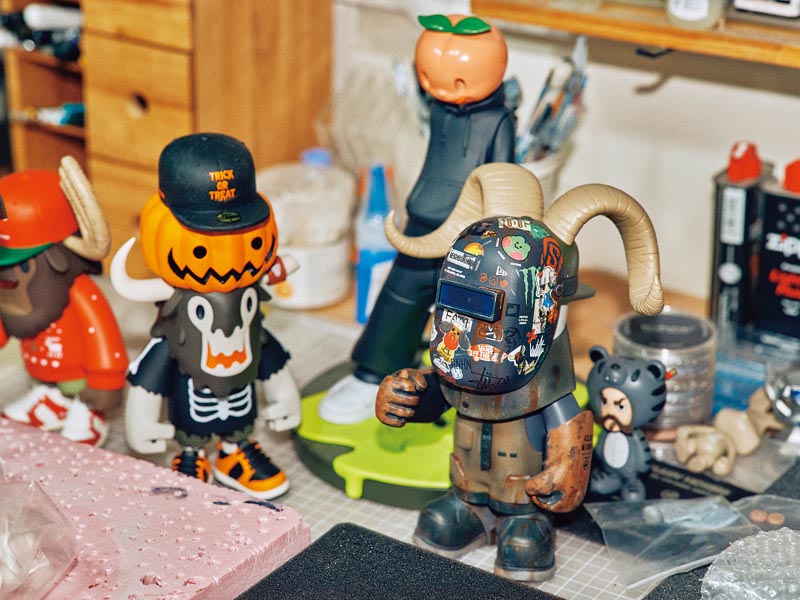
Uptempo’s signature character, Running Horns, is an anthropomorphized herbivorous creature with horns. Recently, Uptempo has been drawing inspiration from people who pour their hearts into their work while finding happiness in little things.
What attracted you to art toys?
Uptempo: I was really drawn to the idea of turning flat graphic designs into real, three-dimensional objects. Art toys can be used to convey deeply personal stories and themes, which is something that resonates with young people and has played a big role in the growth of the art toy culture. It’s why they’re considered hip. A parallel can be drawn with rap, which was originally d in defiance of the mainstream before evolving into the global hip-hop phenomenon. In a sense, art toys are also a type of counterculture.
Another appeal of art toys is how they allow creators to communicate directly with their fans. For example, my signature character, Running Horns, carries the slogan “Run again and again.” This is my way of telling fans, “Don’t worry about what others think, believe in yourself and run at your own pace.”
What drives Hands In Factory?
Ha Jong-hun: It’s pretty straightforward — we just love art toys. It’s a simple but very important reason. Because we love what we do we’re able to stay focused on our work, even when times get tough, or when we don’t bring in a lot of money. For me, the act of creating is exciting in itself. The enjoyment I get from the process allows me to continuously come up with new ideas, which I believe has been another driving force.
What about character development?
Uptempo: When art toy creators design characters, they often project onto them the qualities they aspire to. In my case, I used to express my rebellious street culture spirit through my characters and dress them in the clothes that I wanted to wear, as though I was playing with dolls. That’s why a lot of my early pieces in the Running Horns series included characters like a rapper or young people playing basketball.
More recently, though, I’ve started creating new characters like postal workers or mechanics. As I grow older, I’ve come to admire those who dedicate themselves to their work without worrying about how society sees them.
Ha Jong-hun: In 2016, I created a character called Hazard, inspired by a lizard. At the time, I concentrated on the character’s appearance, but now, nearly ten years later, my focus has shifted to developing the character’s personality and helping it find its own identity. That’s because I got tired of receiving feedback solely focused on how cute or stylish my characters were. It’s also why I’ve started working on a lizard terrarium diorama. I hope that by creating a habitat for my characters, I can draw attention to the importance of coexisting peacefully with our ecosystems and respecting different ways of life.
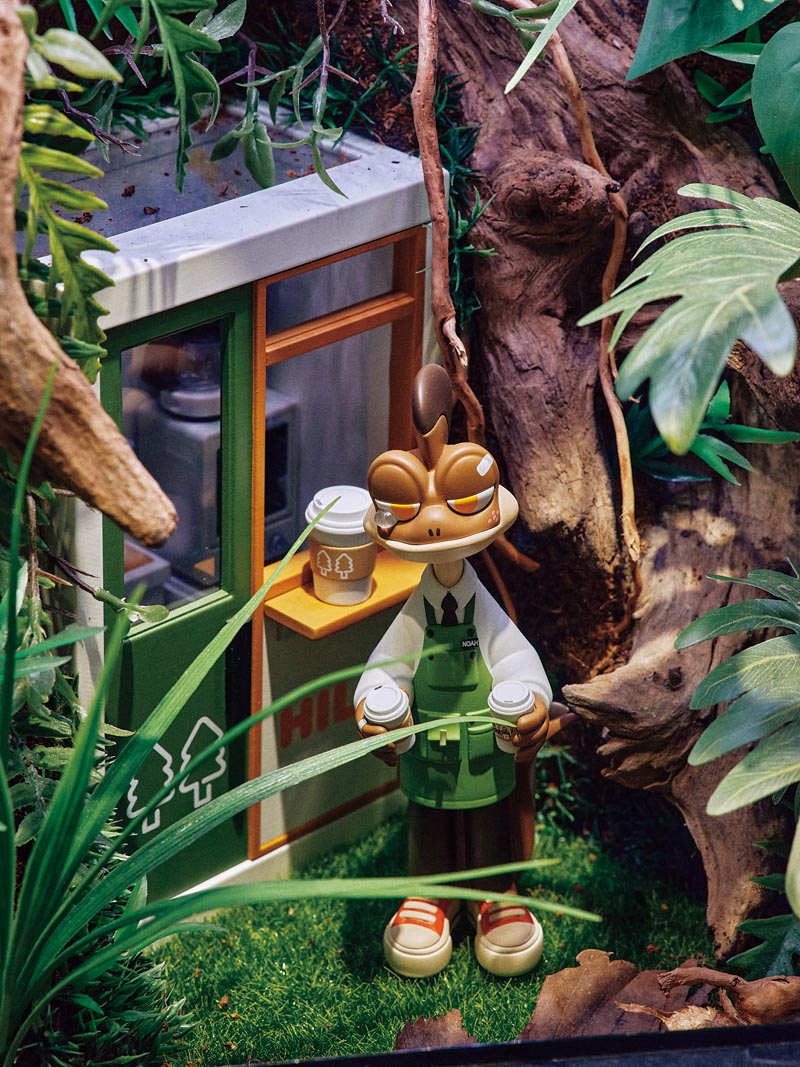
Ha Jong-hun’s character Hazard is a lizard that carries on with life even after losing its tail, symbolizing the strong will of people nowadays, who must constantly overcome new challenges in life.
How did the Bukcheong Saja project emerge?
Uptempo: In December 2023, we released our Running Horns and Hazard characters wearing traditional lion masks. When the sneaker brand Seven Eight Under first approached us for a collaboration, we knew we wanted to do more than create characters wearing their shoes. We wanted to find a way to blend their sneaker designs with the distinct identity of Hands In Factory, which is how we came up with the idea for Bukcheong Saja — inspired by the traditional Korean masked dance-drama known as Bukcheong Saja Noreum, in which people wear giant lion masks. We realized we had never really explored Korean elements in our work before, and this collaboration felt like the perfect opportunity. Seven Eight Under suggested incorporating shoelaces that mimicked the fur of the lion masks, which helped make the finished product even more memorable.
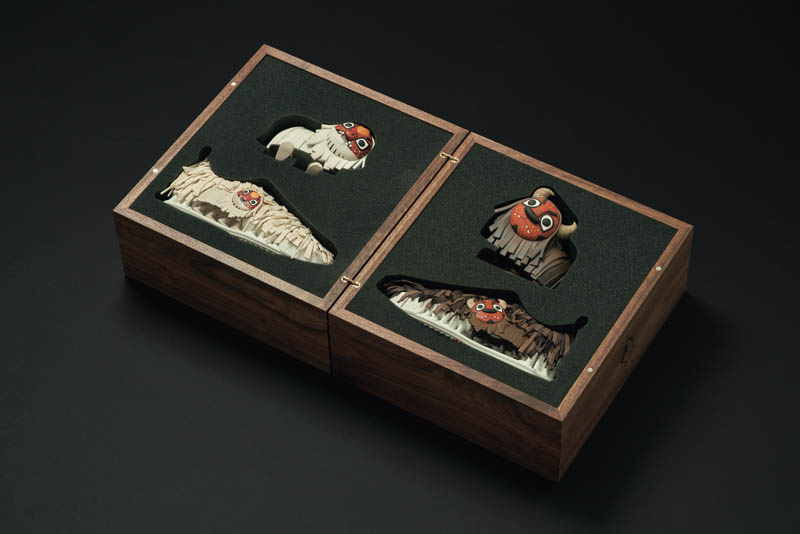
In late 2023, Hands In Factory collaborated with sneaker brand Seven Eight Under to create characters inspired by the traditional Korean masked dance-drama known as Bukcheong Saja Noreum.
Courtesy of Hands In Factory
How can the art toy market grow further?
Uptempo: As of now, there are no platforms or channels in Korea specifically dedicated to art toys. When artists aren’t participating in art fairs or holding exhibitions, most depend on their personal websites, social media, or online stores to sell their work. One advantage of this approach is the direct interaction it fosters, helping artists build closer relationships with those who buy their work. In the long run, though, if art toys are to transition from a subculture into a proper industry, we need a market and system that will enable mass production.
What are the latest trends?
Ha Jong-hun: In the past, art toys were mainly made from clay, but following the advent of 3D printing, most toys are now made using that technology. Recently, though, there’s been a shift toward handmade art toys with a retro look, a reaction to the standardization that comes from using cutting-edge technology. For example, artists may use wood to give their toys a rougher and more natural appearance. Even when working with resin, I like to carve intricate details by hand, giving my pieces a more custom-made feel.
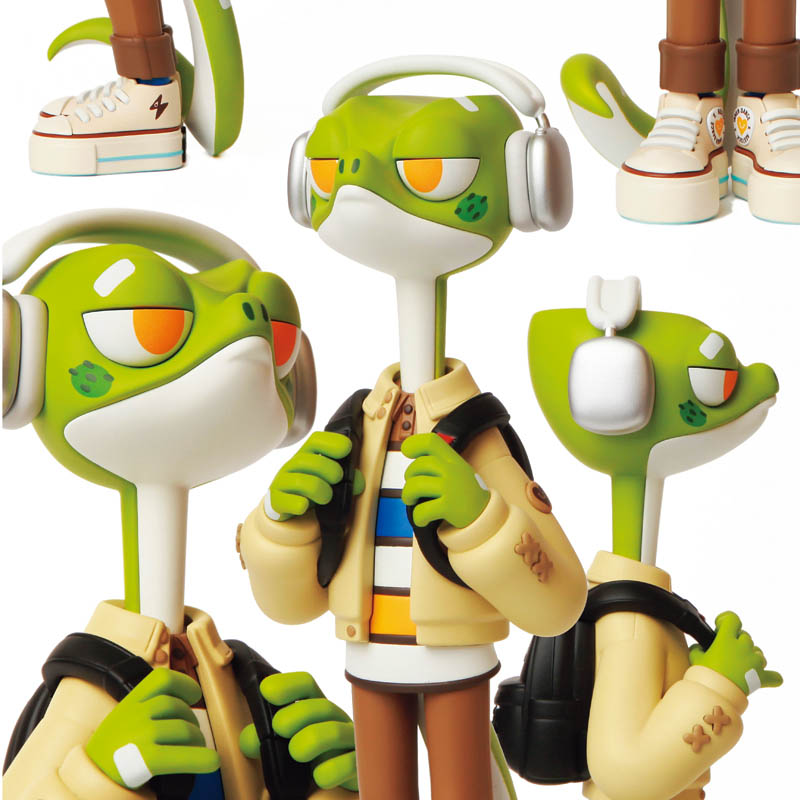
VINE, another of Ha Jong-hun’s characters, was inspired by his own daily commute, during which he listens to music chosen according to his mood on a given day.
Courtesy of Hands In Factory
What are the advantages of working as a team?
Uptempo: Working alone has clear limitations. If all your time is spent on production, it leaves you little time to explore other areas, and you end up staying in your comfort zone. When you belong to a team made up of individuals with diverse backgrounds, you’re constantly exposed to new opinions and feedback you might not have considered on your own. Not only do you get fresh ideas from your teammates, you can also rely on them for technical help, allowing you to achieve things that you can’t manage alone.
What’s in store for Hands In Factory this year?
Uptempo: We’re the ones who came up with the design for FFALO, the mascot of the fashion brand New Era. We’ll be joining New Era at ComplexCon in Las Vegas this coming October.
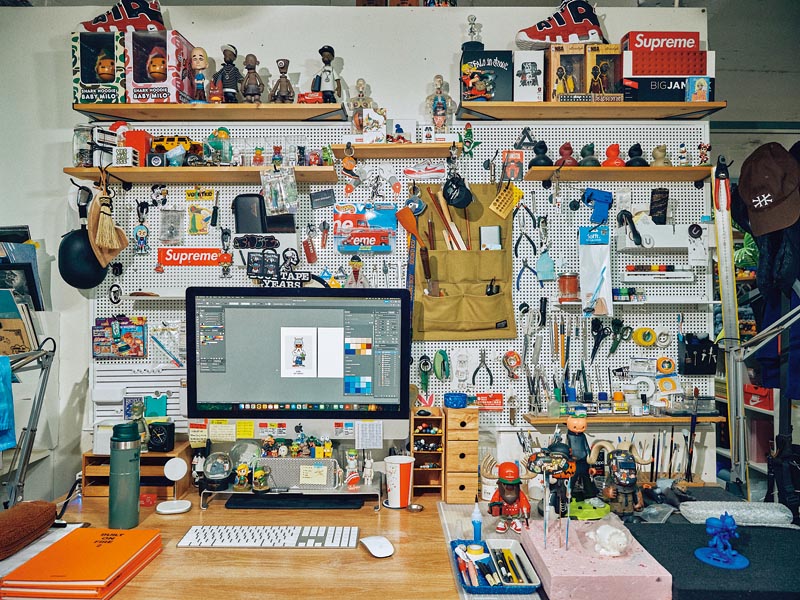
Pictured above is the workspace of Uptempo, whose dream is to produce a film starring his character Running Horns one day.
Ha Jong-hun: I would really like to showcase my work in 2D or graphic form. We are constantly talking about design, and I think it would be great to have an exhibition dedicated to highlighting just how important it is. I often try to picture what an exhibition filled with hundreds of stickers might look like.
Uptempo working on a sketch (left), and Ha Jong-hun doing a paint job (right). In countries with a thriving toy industry, different specialists typically handle each stage of the creative process. However, at Hands In Factory, each artist is responsible for their own work from start to finish, including design, sculpting, and painting.